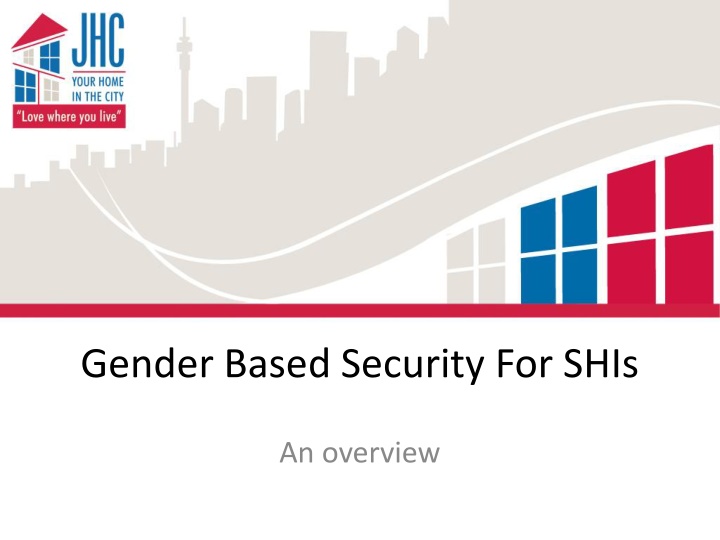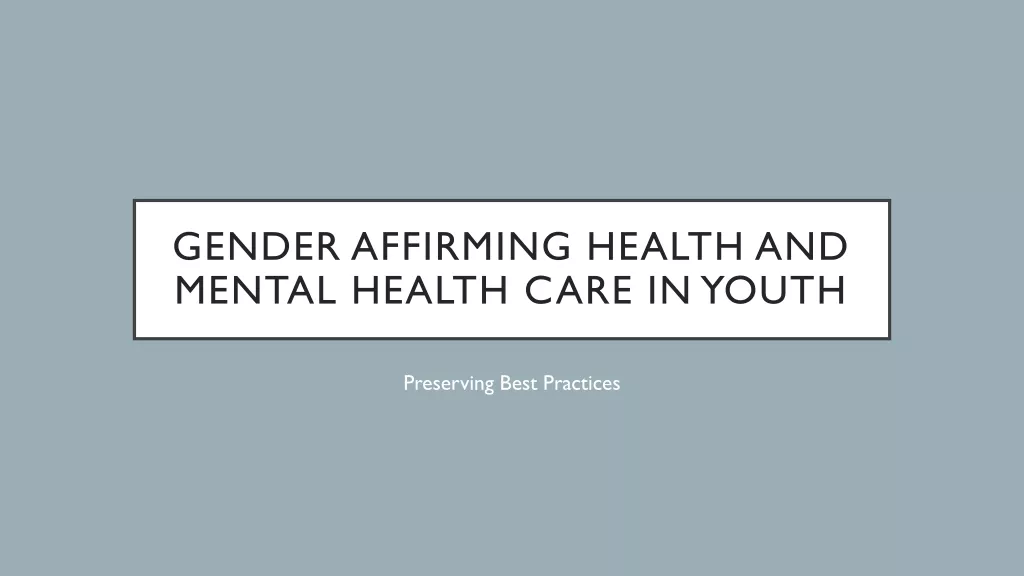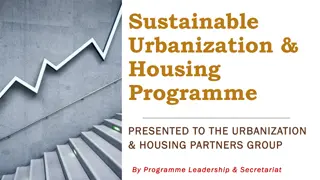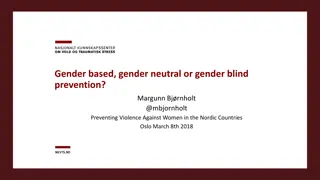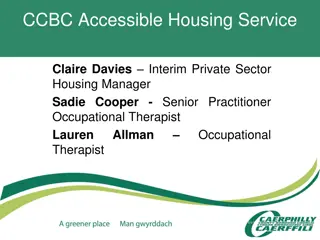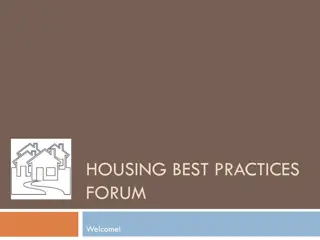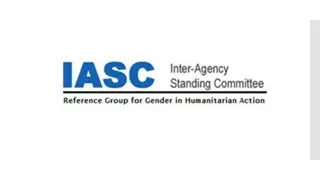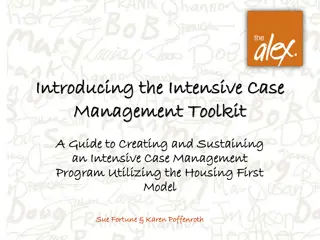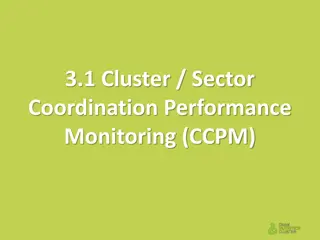Enhancing Gender Security in Housing: A Pilot Study
The pilot study on gender security, health, and safety conducted by Johannesburg Housing Company provides insights into improving security plans, safety design components, and community safety audits in social housing institutions. The study involves stakeholder engagement, tenant focus groups, and safety adaptations based on priority issues identified. Key findings highlight challenges such as littering, drug abuse, and unsafe behaviors in shared spaces.
Download Presentation

Please find below an Image/Link to download the presentation.
The content on the website is provided AS IS for your information and personal use only. It may not be sold, licensed, or shared on other websites without obtaining consent from the author.If you encounter any issues during the download, it is possible that the publisher has removed the file from their server.
You are allowed to download the files provided on this website for personal or commercial use, subject to the condition that they are used lawfully. All files are the property of their respective owners.
The content on the website is provided AS IS for your information and personal use only. It may not be sold, licensed, or shared on other websites without obtaining consent from the author.
E N D
Presentation Transcript
Gender Based Security For SHIs An overview
BACKGROUND The National Association of Social Housing Organisations (NASHO) and the Equal Spaces to End Spatial Apartheid Project 2016-20, managed by Rooftops Canada, contracted the Johannesburg Housing Company to conduct a pilot study on gender security, health and safety The pilot study was funded by the Government of Canada through Global Affairs Canada. Two SHIs were nominated to participate in the pilot study, which also reflects JHC s own experiences. It is intended to serve as an example for similar work in other SHIs.
TERMS OF REFERENCE Review security plans Safety design components Look at active and passive security approaches The current security policy and procedures. Run focus groups with women tenants, who have raised issues with security Conduct interviews with the front line security, building management and the community development staff.
TERMS OF REFERENCE Conduct a community safety audit with women tenant representatives, appropriate SHI staff, and other stakeholders in the buildings and immediate surrounding areas Develop a plan for each SHI to implement adaptations and maintenance focused on priority safety issues identified during the safety audit. Develop an overall draft security plan which includes, policies, protocols and procedures.
METHODOLOGY Part 2 Brainstorming and preparation of a workplan Staff Engagement and interviews Stakeholder interviews Women and children focus groups Assessment of the tenant intake processes Neighbourhood walkabout Presentation of the report Data analysis and report writing Confirmation and clarification of facts Part 4 Part 1 Part 3
METHODOLOGY Interviews with the different Stakeholders at the Institution:-
Findings Related to House Rules Littering Drug and alcohol use/abuse in common areas Dangerous driving habits Loud music and parties Inappropriate behaviours in children s play areas Intervention approaches are mixed
Findings Related to Security Security protocols not always clear Incident record keeping gaps Relationship with SAPS could improve Confidentiality Unauthorised visitors gaining access Women not fully confident with security approaches when threats are present Domestic violence not properly addressed Responses to incidents outside the gate
Findings Related to Screening Problem tenant behaviours at outset of tenancy Criminal behaviours
Findings Related to Property Maintenance Play facilities are inadequate Grounds maintenance issues Hazardous conditions: glass, electrical Insecure areas of the development Lighting not working/inadequate Cleaning and refuse management
Findings Related To Incident Management Incident management protocols could improve Confidentiality of information not always safeguarded Security shift change protocol Relationship with SAPS could be improved Relationship with supportive external agencies could improve
FINDINGS OF THE STUDY Community Development Social networks SHIs could improve relationships with external organisations such as CBOs and NGOs and government departments Tenant engagement could be improved
Going Forward Tenant screening process House Rules and enforcement Security Community development Neighbourhood development Property management Incident management
A Security Policy Framework Based on good practice to build communities that are supportive and protective of women, children and vulnerable people Need to align this policy framework with other policies A key factor of the policy is to address communication between tenants and the SHI to allow the SHI to proactively address emerging issues and implement structures that support the community
A Security Policy Framework Recognizes that achieving a healthy community will require collaboration and partnerships to be established and well managed
Roles and Responsibilities Roles and Responsibilities will need to be addressed for: Caretaker/Housing Supervisor/Housing Manager Community Development Department staff Property Team Security staff
Tenant Screening Policy speaks to the importance of tenant screening recognizing two key areas Financial viability and Social viability Guidelines and procedures are embedded in the policy
House Rules Enforcement As with all rules, consistent enforcement is critical for tenants. Detailed guidelines were developed to guide staff in interpreting the transgression with recommended sanctions. This allows the Caretakers and the Community Development staff (where applicable) to take appropriate action when addressing the transgression
Incident Reports SHI s must develop or amend an incident reporting system this is critical in order to consistently collect and interpret the seriousness of the transgression Incident reports are instrumental in assessing the health of the SHI community and provide valuable input into current and future programming and demand for partnerships.
Security Services Services contracted by the security providers must include access control, security monitoring - which includes regular patrolling and monitoring of the SHI property and reporting Reporting needs to be documented in a detailed manner that will allow the SHI to take action Security staff must play a role to support all tenants including woman and children to feel safe and secure.
Security Services All SHIs must have systems that allow tenants to contact security to request assistance or report incidents. Clear property access rules must be managed and communicated House rules should reflect policies on tenants authorizing access for visitors and additional tenants.
Infrastructure and Neighborhood Development Policy includes the need to maintain the SHI property infrastructure and speaks to tenant engagement on an ongoing basis for input into issues especially ones that are impacting woman and children. SHIs have a civic responsibility to engage in urban regeneration to ensure safety for woman and children beyond the front gates of the SHI
Security costs SHRA average Highest cost per unit per month (pupm) is R814 for a SHI that has 1 843 units under management Lowest cost of security pupm for a SHI with 88 units is R3 In general, average cost pupm is R220 for 25 SHIs in the SHRA portfolio, and the average number of units is 1 208 NASHO s moving average The moving average trims out the lowest 3 (R3, R25, R44) and highest 3 security costs pupm (R421, R465, and R814) In this scenario, the lowest security cost pupm is R104, and the highest security cost pupm is R368 The moving average security cost pupm is R195
